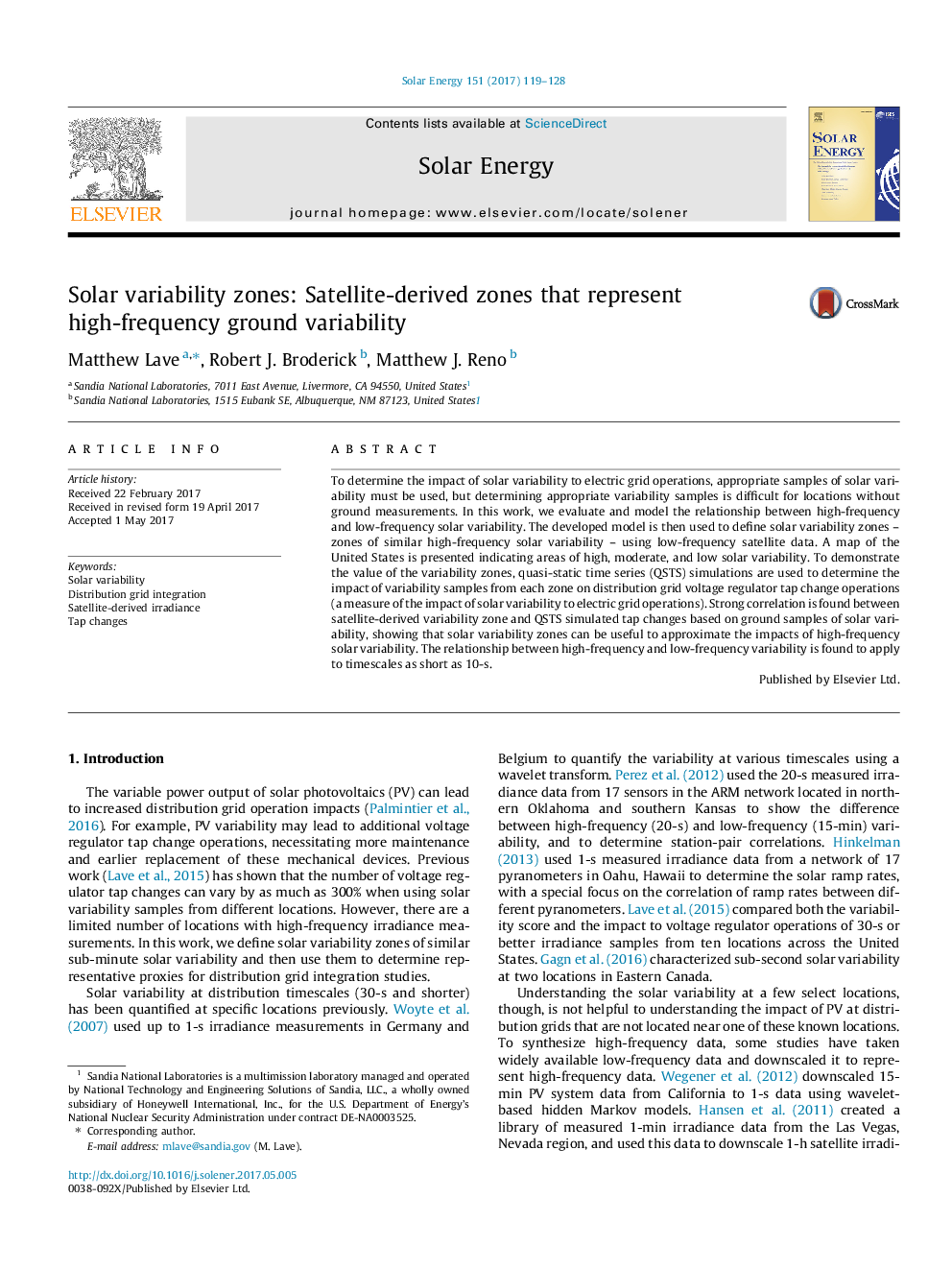| Article ID | Journal | Published Year | Pages | File Type |
|---|---|---|---|---|
| 5450963 | Solar Energy | 2017 | 10 Pages |
Abstract
To determine the impact of solar variability to electric grid operations, appropriate samples of solar variability must be used, but determining appropriate variability samples is difficult for locations without ground measurements. In this work, we evaluate and model the relationship between high-frequency and low-frequency solar variability. The developed model is then used to define solar variability zones - zones of similar high-frequency solar variability - using low-frequency satellite data. A map of the United States is presented indicating areas of high, moderate, and low solar variability. To demonstrate the value of the variability zones, quasi-static time series (QSTS) simulations are used to determine the impact of variability samples from each zone on distribution grid voltage regulator tap change operations (a measure of the impact of solar variability to electric grid operations). Strong correlation is found between satellite-derived variability zone and QSTS simulated tap changes based on ground samples of solar variability, showing that solar variability zones can be useful to approximate the impacts of high-frequency solar variability. The relationship between high-frequency and low-frequency variability is found to apply to timescales as short as 10-s.
Related Topics
Physical Sciences and Engineering
Energy
Renewable Energy, Sustainability and the Environment
Authors
Matthew Lave, Robert J. Broderick, Matthew J. Reno,
